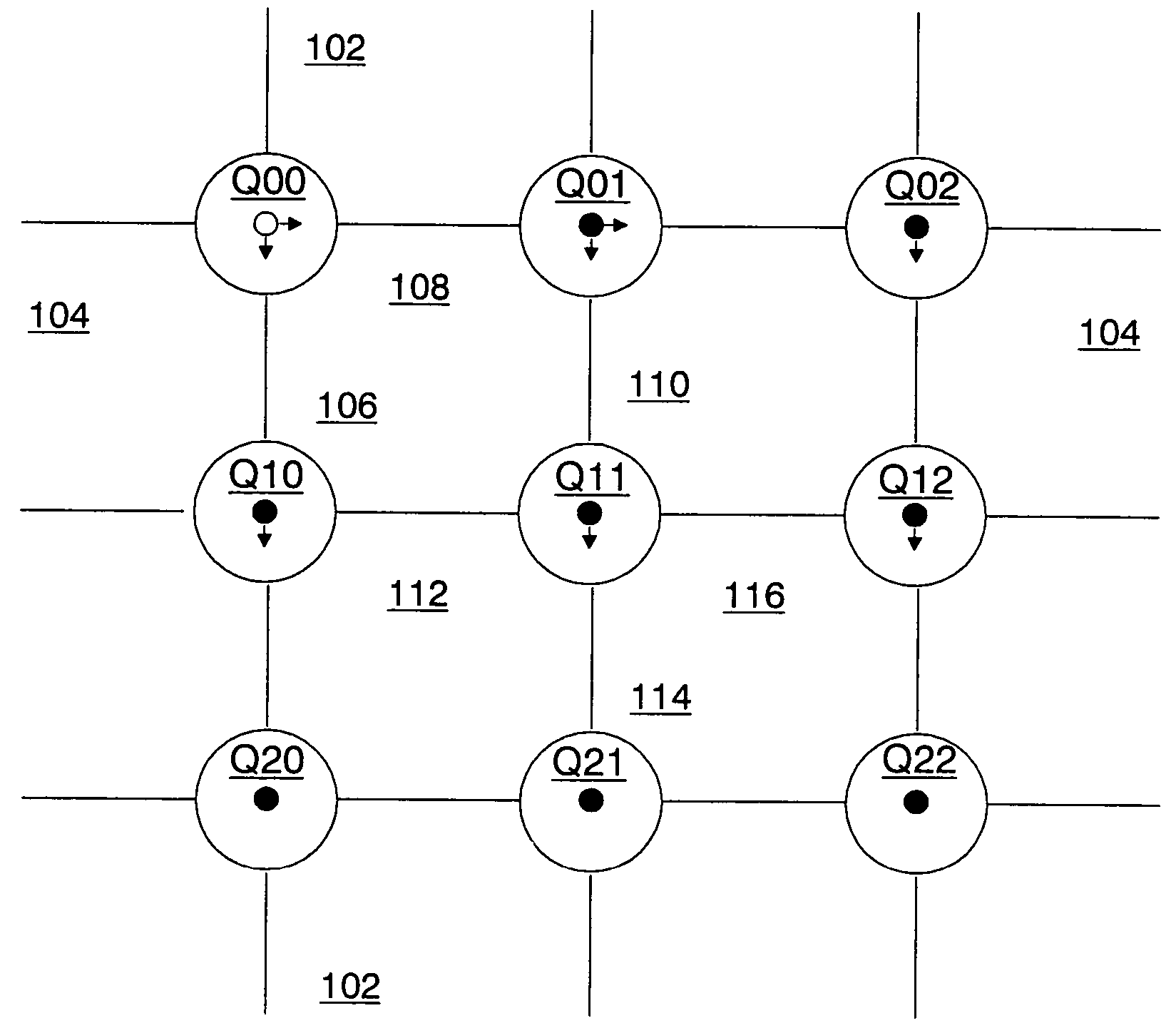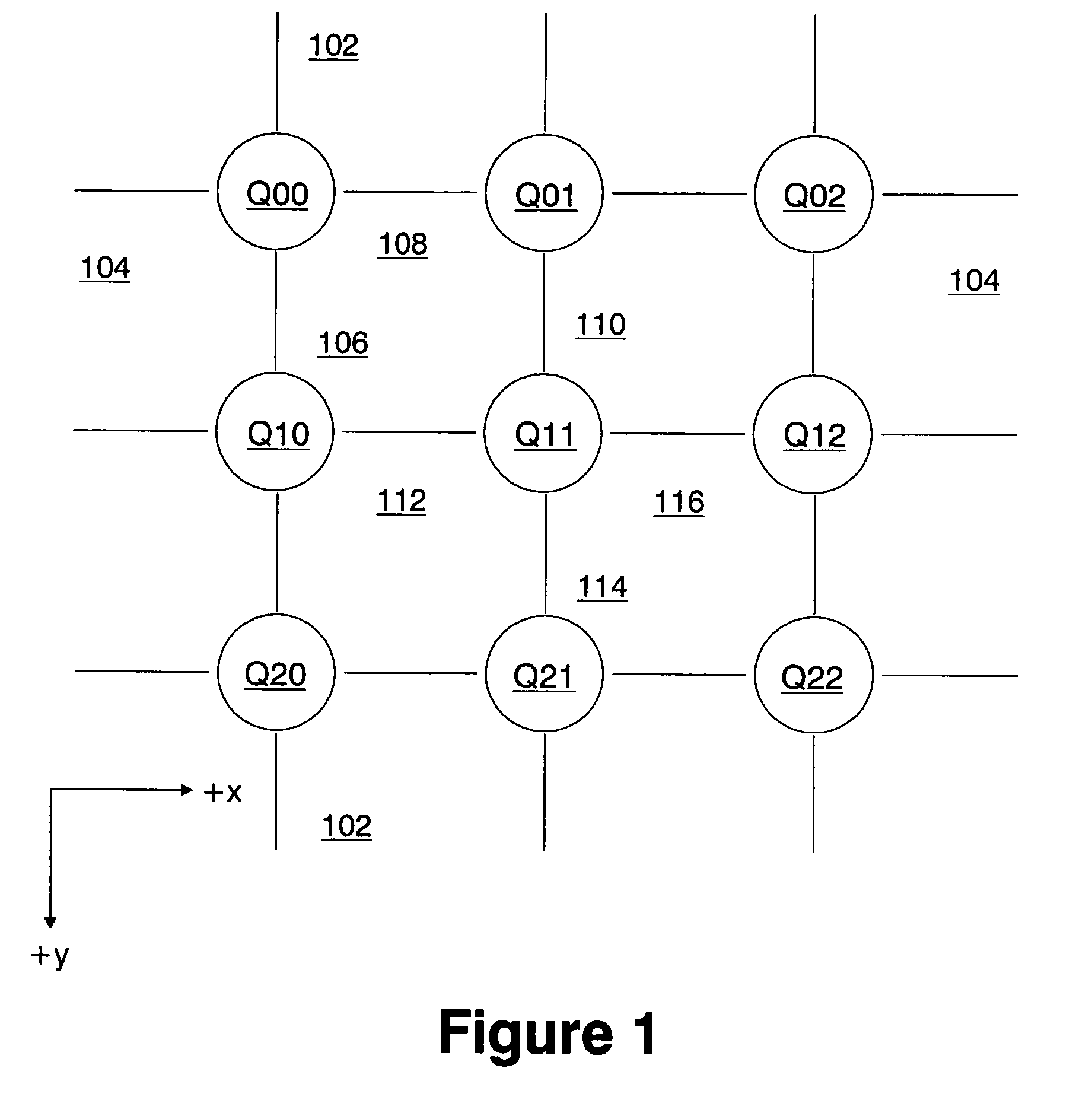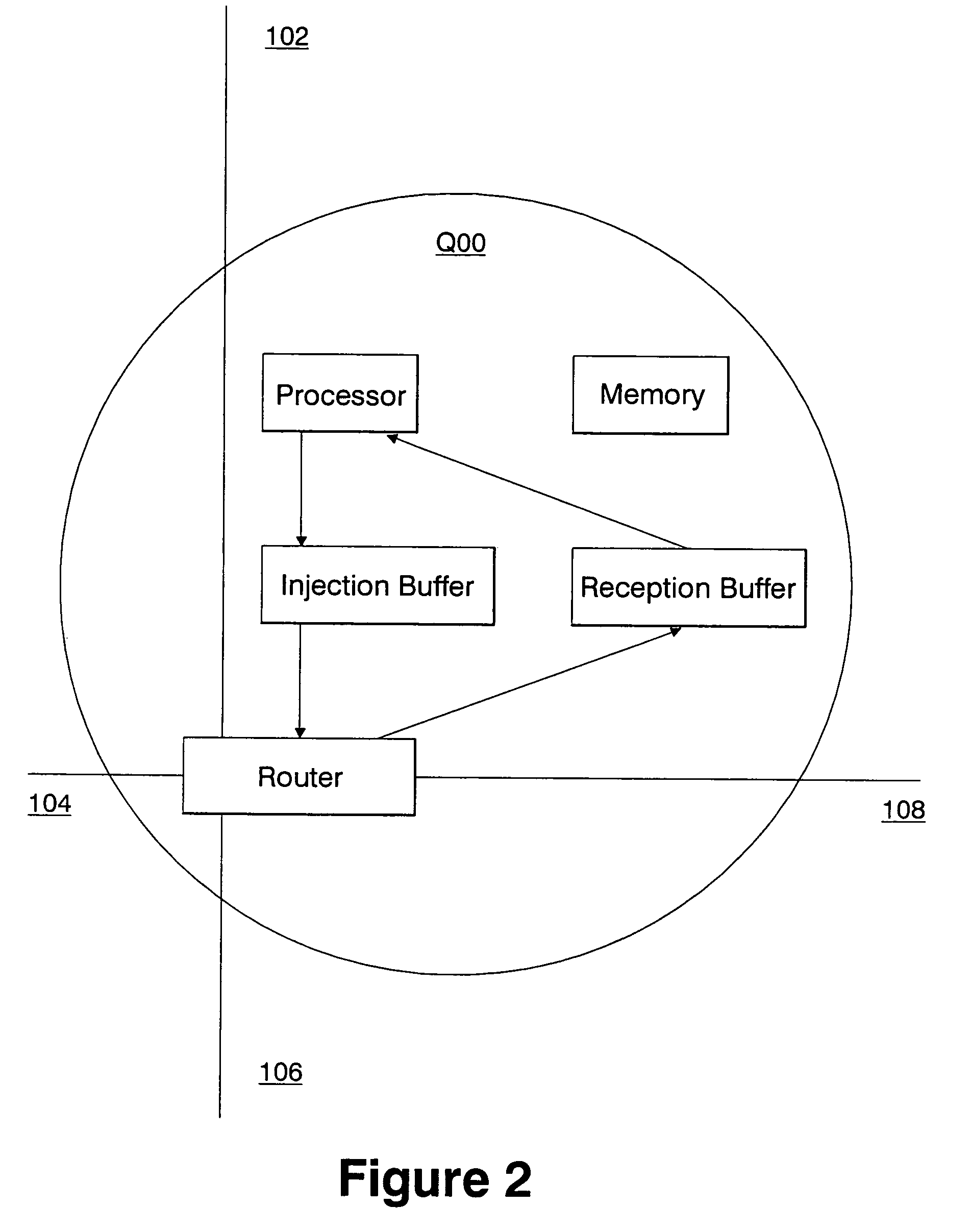Class network routing
a network routing and network technology, applied in the field of class network routing, can solve the problems of insignificant slowed down basic network message passing types, and achieve the effect of reducing the total number of messages in the network as well as the latency of a broadcast, efficient support, and enhancing a network
- Summary
- Abstract
- Description
- Claims
- Application Information
AI Technical Summary
Benefits of technology
Problems solved by technology
Method used
Image
Examples
example 1
Path-based Multidrop Message Passing
[0034]The network of a distributed-memory parallel computer is an example of a message-passing data network. Each node of such a computer has one or more processors that operate on their local memory. An application using multiple nodes of such a computer coordinates their actions by passing messages between them. An example of such a computer is described in provisional application Ser. No. 60 / 271,124 for A Massively Parallel Supercomputer. In that computer, each single node is paired with a single switch of the network. In that computer, the switches are connected to each other as a three dimensional (3D) torus. Thus in that computer, each switch is linked to six other switches. These links are to a switch in the positive direction and to a switch in the negative direction in each of the three dimensions. Each switch is identified by its (x, y, z) logical address on the 3-dimensional torus. By contrast, in a computer using a 2-dimensional torus,...
example 2
Sending Multidrop Packets without Knowing the Recipients
[0042]As described in Example 1, class routing allows a node with the deposit entries [0,0] for class values [0,1 ] to not receive a copy of a packet, even though the node is on the path of the multidrop packet. This information need not be known by the source node of the multidrop packet. In other words, class routing allows a node to source a multidrop packet without knowing the recipients. However, in the network of Example 1 there is one exception, the destination node of the multidrop packet always will receive a copy of the packet. Thus if the destination node is to not receive a copy of the packet, this must be known by the source node such that it can use another destination.
[0043]For example, assume node (0,0) is the source of a multidrop packet originally destined for node (0,2). This may be a natural destination on a torus network of size 3*3, since nodes (0,9) through (0,2) are a complete row. If node (0,2) is to no...
example 3
Snooping
[0049]Assume the network described above in Example 1, including its use of the class value 0 for the unicast messages of the basic network. A node can snoop, and acquire and store information on the unicast packets passing through its switch by using the entry 1 for class value 0 in the deposit table.
[0050]The table is illustrated below. In the example, the node is a participant in the multicast with class value 1. The table only applies for a packet at a node other than its destination node. In this example, a packet at its destination node is deposited as in the usual unicast routing.
[0051]
For a packet NOT destined for this nodeclass valuedeposit value0111
[0052]An example use of such snooping is the investigation of the performance of the network. Without snooping there may only be information on when the packet entered the network at the source node and when it exited at the destination node. With snooping, there can be information on when the packet passed through a nod...
PUM
 Login to View More
Login to View More Abstract
Description
Claims
Application Information
 Login to View More
Login to View More - R&D
- Intellectual Property
- Life Sciences
- Materials
- Tech Scout
- Unparalleled Data Quality
- Higher Quality Content
- 60% Fewer Hallucinations
Browse by: Latest US Patents, China's latest patents, Technical Efficacy Thesaurus, Application Domain, Technology Topic, Popular Technical Reports.
© 2025 PatSnap. All rights reserved.Legal|Privacy policy|Modern Slavery Act Transparency Statement|Sitemap|About US| Contact US: help@patsnap.com



